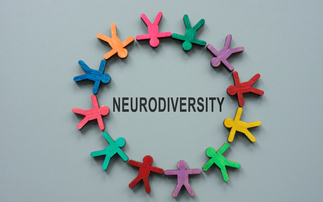A highly degenerative disease, muscular dystrophy can lead to weakness and disability. Emma Gregson explains how the condition is viewed by underwriters
Muscular dystrophy (MD) is a generic term used to describe a group of hereditary muscle disorders in which slow, progressive degeneration of the skeletal muscle responsible for controlling movement, leads to increasing weakness and disability.
Muscles and membranes need many different types of protein to stay healthy. When the genes that tell the body how to make these proteins are supplied with incorrect information or leave out important details, unhealthy muscles or membranes develop. The muscle fibres then become damaged, which causes problems with the way the body works.
As the condition can be genetically linked, family history of the condition is also taken into account when assessing risk, subject to the current genetic legislation.
The prognosis of muscular distrophy varies according to the type and progression of the disorder. Some cases may be mild and develop slowly with normal lifespan, while other cases may have more marked progression of muscle weakness, functional disability and loss of ambulation. Life expectancy may depend on the degree of progression and late respiratory deficit.
For example, boys affected by Duchenne MD are expected to live into their late teens or early twenties. However, advances in respiratory care has improved this prognosis in recent years and some suffers are living into their thirties and occasionally, their early forties.
Prognosis
The prognosis varies considerably depending on the type of muscular distrophy. Here are some examples:
• Duchenne - very poor prognosis associated with a life expectancy of about 20 years. Primarily affects boys. Onset is usually between three and five years and progresses rapidly.
• Becker - relentlessly progressive but more benign than Duchenne. Normally noticeable at adolescence. Many survive beyond age 50 but there is a risk of heart failure.
• Limb girdle - similar mortality experience to Becker. Severe disablement is usual within 20 years of onset of symptoms.
• Facioscapulohumeral - very slow progression. Involvement of the pelvic girdle muscles has an adverse effect on mortality.
• Dystrophia myotonica - progressive incapacity, death usually in late middle age from respiratory infection or cardiac failure.
• Myotonia congenita - no associated extra mortality. Morbidity may be affected.
• Oculopharyngeal - minimal effect on mortality.
• Mitochondrial myopathies - varies from minimal mortality to high fatality with accompanying Encephalopathy, a degenerative disorder of the brain.
Treatment
There is no known treatment for muscular dystrophy and therapy is palliative only. Steroids are sometimes used in Duchenne MD and cardiac transplantation may be useful in Becker's disease.
There is no specific treatment for any of the forms of muscular dystrophy and there is currently no known cure, but medications and therapy can, for some, slow the course of the disease. Treatment currently consists of supportive measures such as physical therapy to help strengthen healthy muscles and keep them functioning as long as possible, orthopaedic aids used to help maintain independence, and respiratory therapy used in cases where the muscles that control breathing are impaired.
The cardiac problems that occur with Emery-Dreifuss MD and Myotonic MD may require a pacemaker. The myotonia - a delayed relaxation of a muscle after a strong contraction - occurring in Myotonic MD may also be treated with medication.
Some types affect people in their childhood years such as Duchenne MD, whereas other types, for example, Becker's MD, rarely affects people before the age of ten. Some other types only affect people in their adult years.
Some types of muscular dystrophy can run in families when the abnormal gene is passed on. However, sometimes the abnormal gene may appear for the first time without any warning.
Most of the 20 different types of muscular dystrophy are very rare. Overall, about one in 2,000 babies born in the UK will have a neuro-muscular disorder.
Duchenne MD is the most common and most severe type of the group of muscular dystrophies. It may be inherited as an X-linked gene, but in 50% of cases it arises as a new mutation. About 100 boys are born with the condition in the UK each year - it only affects boys, except in extremely rare cases where it is inherited as an autosomal recessive condition. A small number of female carriers of the gene have a mild degree of muscle weakness themselves and are known as 'manifesting carriers'. Girls can be affected by some of the other types of muscular dystrophy.
Emma Gregson is life and disability underwriter at Scottish Equitable Protect











